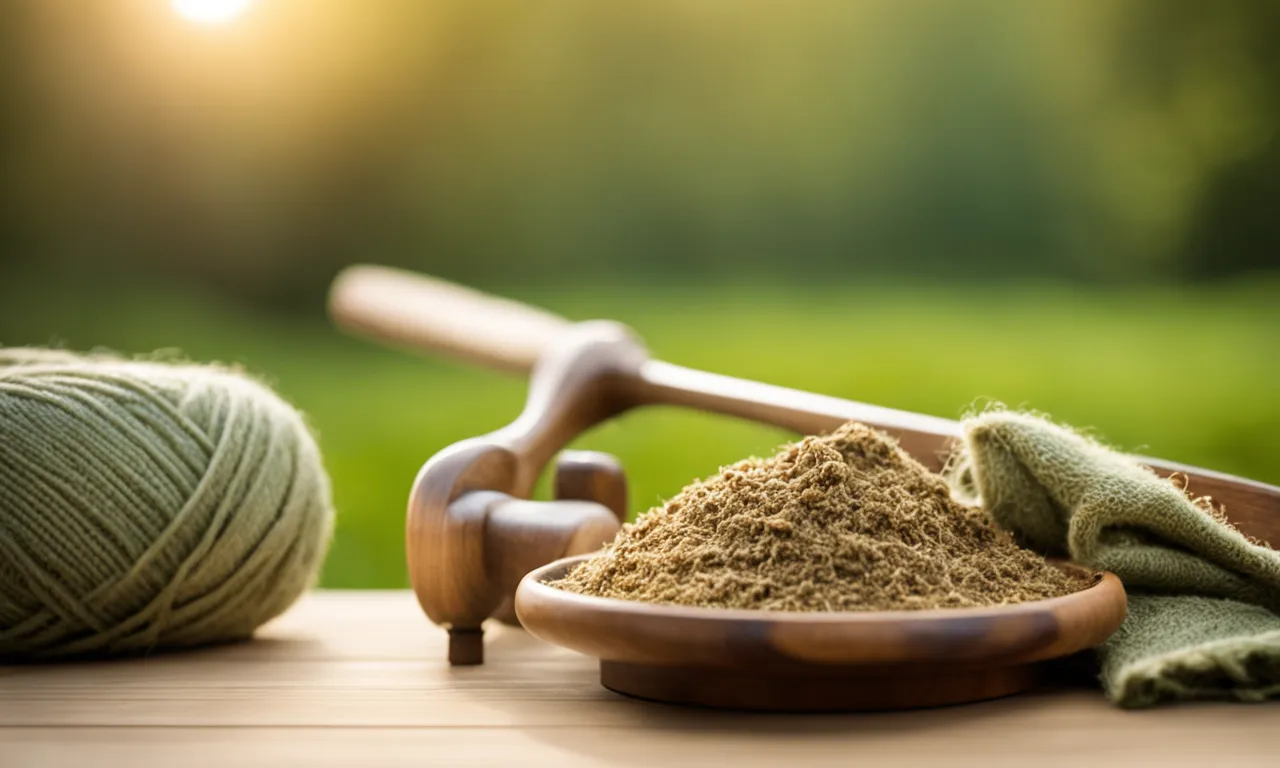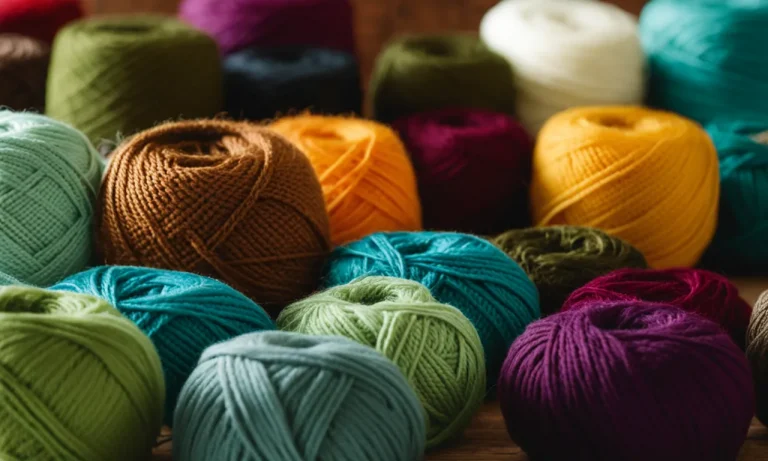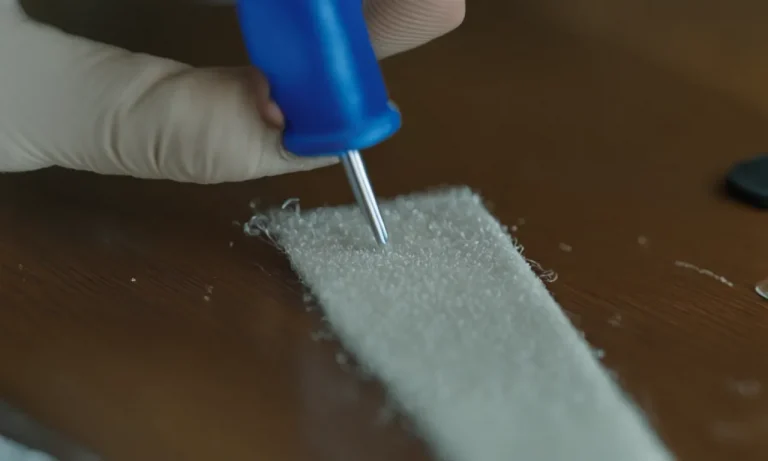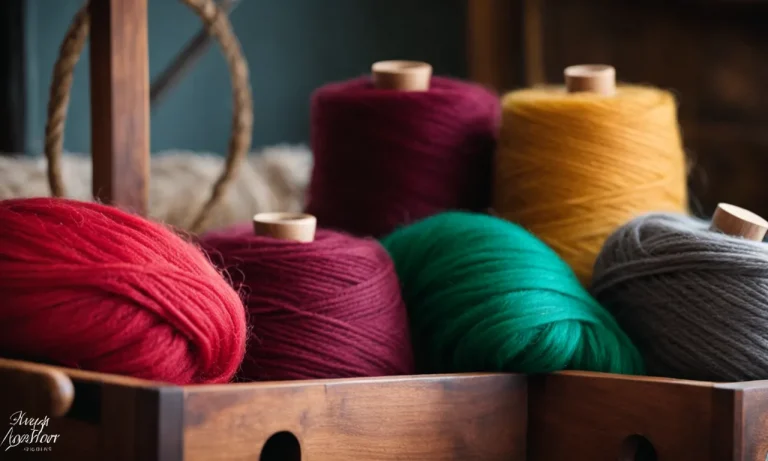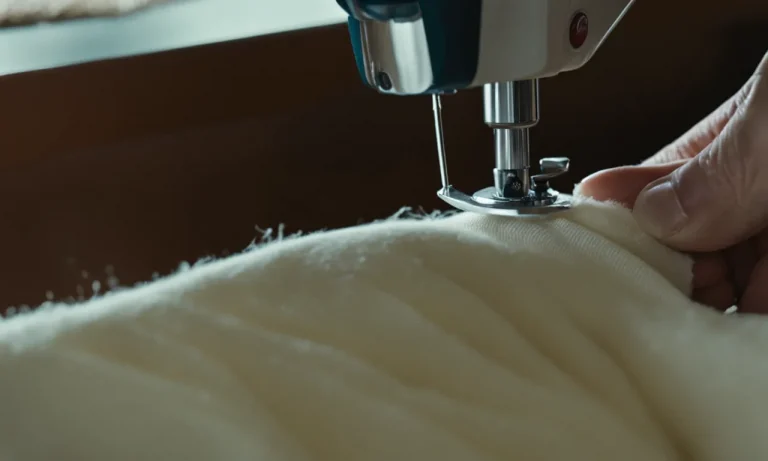How To Make Hemp Fabric: A Step-By-Step Guide
Hemp fabric is made from the fibers of the hemp plant and is known for being durable, breathable, and environmentally friendly. With some basic equipment and techniques, you can make your own hemp fabric at home.
This comprehensive guide will walk you through the entire process, from growing or sourcing hemp fibers to weaving them into fabric.
If you’re short on time, here’s a quick answer to your question: Hemp fabric is made by retting and processing hemp fibers, spinning them into yarn, and then weaving the yarn on a loom into fabric.
In this guide, we’ll cover everything you need to know about making hemp fabric, including: growing and harvesting hemp plants; processing and retting the fibers; spinning hemp into yarn; setting up and using a loom; and finishing techniques for your handmade hemp fabric.
With the right materials and some practice, you’ll be able to produce beautiful, durable hemp fabric using traditional methods.
Growing and Harvesting Hemp
Choosing a Hemp Variety
When it comes to making hemp fabric, choosing the right hemp variety is crucial. There are various hemp strains available, each with its unique characteristics and fiber qualities. Some strains are better suited for fabric production, while others are more suitable for industrial purposes.
It’s essential to research and select a hemp variety that meets your specific fabric production needs. Websites like Hemp Basics and Hemp Trade provide detailed information on different hemp varieties and their applications.
Growing Conditions
Hemp is a versatile plant that can grow in a wide range of climates and soil conditions. However, it thrives best in temperate regions with fertile, well-draining soil. Hemp requires ample sunlight and a minimum of 12 hours of daylight to ensure optimal growth.
It’s important to note that hemp is a bioaccumulator, meaning it absorbs and accumulates toxins from the soil. Therefore, it is crucial to choose clean and uncontaminated land for hemp cultivation. Testing the soil for heavy metals and other contaminants is recommended before planting.
Planting and Maintaining Your Crop
Once you have selected the appropriate hemp variety and prepared the growing conditions, it’s time to plant your crop. Hemp can be grown from either seeds or transplants, depending on your preference and local regulations.
It’s important to space the plants adequately to allow for proper air circulation and avoid overcrowding. Regular watering, weed control, and fertilization are essential to ensure healthy plant growth.
Additionally, monitoring for pests and diseases is crucial to prevent any potential damage to the crop.
Harvesting Hemp Fibers
Harvesting hemp fibers is a delicate process that requires careful timing. Hemp fibers are typically harvested when the plants are in full bloom. At this stage, the stalks contain the highest concentration of long, strong fibers suitable for fabric production.
Harvesting can be done manually by cutting the stalks close to the ground using a sickle or a specialized hemp harvesting machine. Once the stalks are cut, they are left to dry in the field for a few weeks.
After drying, the stalks can be processed further to extract the fibers, which are then used to create hemp fabric.
Processing and Retting Hemp Fibers
Processing and retting hemp fibers is an essential step in the production of hemp fabric. This process involves separating the long, strong fibers from the woody core of the hemp plant. Once the fibers are extracted, they can be spun into yarn and woven into fabric.
Let’s explore the different methods involved in processing and retting hemp.
Methods for Retting Hemp
Retting is the process of breaking down the pectin that binds the hemp fibers to the woody core. There are two common methods for retting hemp: dew retting and water retting. Dew retting involves leaving the harvested hemp stalks in the field for several weeks, allowing the moisture in the air and the natural enzymes on the stalks to break down the pectin.
Water retting, on the other hand, involves submerging the stalks in water for a certain period, usually between 5 to 14 days. Both methods have their advantages and can yield high-quality fibers.
Dew retting is often preferred in areas with a suitable climate, as it requires less labor and water resources. It also helps maintain the natural color of the fibers. Water retting, on the other hand, can produce a cleaner and more uniform fiber, but it requires careful monitoring to prevent over-retting, which can weaken the fibers.
Drying and Breaking Hemp Stalks
After the retting process, the hemp stalks need to be dried before further processing. This can be done by spreading the stalks out in the sun or using specialized drying equipment. Once dry, the stalks are ready to be broken. Breaking involves separating the fibers from the woody core.
This can be done manually by using a wooden mallet or mechanically using a decorticator. Mechanical breaking is more efficient and can handle larger quantities of hemp stalks.
Scutching and Hackling Fibers
After the fibers are separated from the woody core, they need to be further processed to remove any remaining impurities. Scutching is the process of removing the woody shives from the fibers. This is typically done by beating the fibers with a wooden or metal scutching knife.
Hackling, on the other hand, involves combing the fibers to remove any short or tangled fibers. This process helps align the fibers and prepare them for spinning into yarn.
It’s worth noting that the processing and retting methods may vary depending on the desired end product. Different techniques can be used to produce different types of hemp fabric, such as coarse hemp canvas or fine hemp linen.
Each method has its own benefits and considerations, and it’s important to choose the most suitable approach based on the intended use of the fabric.
Spinning Hemp Fibers into Yarn
Choosing Your Spinning Method
When it comes to spinning hemp fibers into yarn, there are a few different methods you can choose from. The most common options include hand spinning, drop spindle spinning, and spinning wheel spinning. Each method has its own advantages and can produce different types of yarn.
Hand spinning allows for more control over the thickness and texture of the yarn, while drop spindle spinning is a portable option that can be done anywhere. Spinning wheel spinning is generally faster and more efficient, making it a popular choice for larger-scale production.
If you’re new to spinning, it’s a good idea to start with hand spinning or drop spindle spinning to get a feel for the process before investing in a spinning wheel. There are plenty of resources available online and in books to help you learn the basics and improve your skills.
Preparing Fibers for Spinning
Before you can start spinning your hemp yarn, it’s important to properly prepare the fibers. Hemp fibers need to be cleaned and combed to remove any dirt, debris, or tangles. This can be done by hand using a process called “hackling” or with a specialized tool called a “hackle”.
Once the fibers are clean and combed, they can be organized into bundles, known as “tops”, which will make the spinning process easier and more efficient.
It’s worth noting that hemp fibers can be quite coarse, especially if they haven’t been processed before. If you prefer a softer yarn, you may want to consider blending the hemp fibers with other fibers, such as cotton or silk, to create a smoother texture.
Spinning Your Hemp Yarn
Now that your hemp fibers are prepared, it’s time to start spinning your yarn. If you’re hand spinning or using a drop spindle, you’ll want to draft the fibers, which involves pulling them apart slightly to create a thin strip.
Then, you’ll twist the fibers together using your fingers or the spindle, gradually adding more fibers as you go. This process will create a continuous strand of yarn.
If you’re using a spinning wheel, the process is similar, but the wheel will do the twisting for you. You’ll feed the fibers onto the spinning wheel and control the speed and tension as the machine spins the fibers into yarn.
Once you have a sufficient amount of yarn, you can wind it onto a bobbin or a niddy noddy to keep it organized.
Remember, practice makes perfect when it comes to spinning hemp yarn. Don’t be discouraged if your first attempts aren’t perfect – keep experimenting and refining your technique, and soon you’ll be spinning beautiful, high-quality yarn for all your crafting projects!
Weaving Hemp Fabric
Creating your own hemp fabric can be a fulfilling and rewarding experience. Weaving hemp fabric involves several steps, from setting up your loom to removing the finished fabric. This step-by-step guide will walk you through the process, allowing you to create your own unique and sustainable fabric.
Setting Up Your Loom
The first step in weaving hemp fabric is to set up your loom. A loom is a device used to weave threads or yarns into fabric. There are different types of looms available, including frame looms and floor looms. Choose a loom that suits your needs and space.
Pro tip: Make sure to secure your loom to a sturdy surface to prevent any movement while weaving.
Warping the Loom
Once your loom is set up, it’s time to warp it. Warping is the process of setting up the vertical threads on the loom, which will serve as the foundation for your fabric. Measure and cut the hemp yarn to the desired length, ensuring that it is strong and durable.
Pro tip: Use a warping board or warping pegs to maintain an even tension while warping your loom.
Weaving the Fabric
With your loom set up and warped, it’s time to start weaving the fabric. This is where your creativity comes into play. Choose the weaving pattern you want to achieve and begin interlacing the weft yarn through the warp threads.
Pro tip: Experiment with different weaving patterns and colors to create unique designs and textures in your fabric.
Removing the Fabric from the Loom
Once you have completed weaving your fabric, it’s time to remove it from the loom. Carefully cut the fabric from the warp threads, ensuring that you don’t accidentally cut any of the threads. Gently remove the fabric, taking care not to pull or stretch it.
Pro tip: Give your fabric a final press with a warm iron to smooth out any wrinkles and give it a polished finish.
By following these steps, you can create your own hemp fabric and unleash your creativity. Remember to take your time and enjoy the process as you weave your way to a beautiful and sustainable fabric.
Finishing Your Hemp Fabric
Once you have successfully woven your hemp fabric, it is time to give it the finishing touch. This step is crucial in ensuring that your fabric is ready to be used for various applications. Here are the key steps involved in finishing your hemp fabric:
Washing and Drying
The first step in finishing your hemp fabric is washing and drying it. This helps to remove any impurities or residual chemicals that may be present in the fabric. It is recommended to use a gentle detergent and cold water to avoid damaging the fibers.
After washing, allow the fabric to air dry or use a low heat setting in the dryer.
Fulling or Napping
Fulling or napping is an optional step that can be done to enhance the texture and softness of your hemp fabric. Fulling involves subjecting the fabric to moisture, heat, and agitation, which causes the fibers to shrink and tighten. This process results in a denser and more durable fabric.
Napping, on the other hand, involves raising the surface fibers of the fabric to create a soft and fuzzy texture. Both fulling and napping can be done by hand or with the help of specialized machinery.
Optional Steps like Dyeing
Once your hemp fabric is washed and dried, you might want to consider adding some color to it through the process of dyeing. Dyeing gives you the opportunity to create a unique and personalized fabric.
There are various methods of dyeing, including natural dyeing using plant-based dyes or chemical dyeing using synthetic dyes. Before dyeing your fabric, it is important to follow the instructions provided by the dye manufacturer and conduct a test on a small piece of fabric to ensure desired results.
Pro Tip: If you are looking for more detailed instructions on finishing your hemp fabric, websites like Textile Learner provide comprehensive guides and resources. These websites can be a great source of information for beginners as well as experienced fabric enthusiasts.
Conclusion
With the right hemp variety, equipment, and techniques, you can produce your own environmentally sustainable hemp fabric at home. While it takes time and labor, the ability to control the entire process from plant to finished cloth makes it a rewarding craft.
We hope this guide has given you all the information you need to start your hemp fabric making journey. With some patience and practice, you’ll be creating beautiful hemp textiles to use and enjoy in no time.

